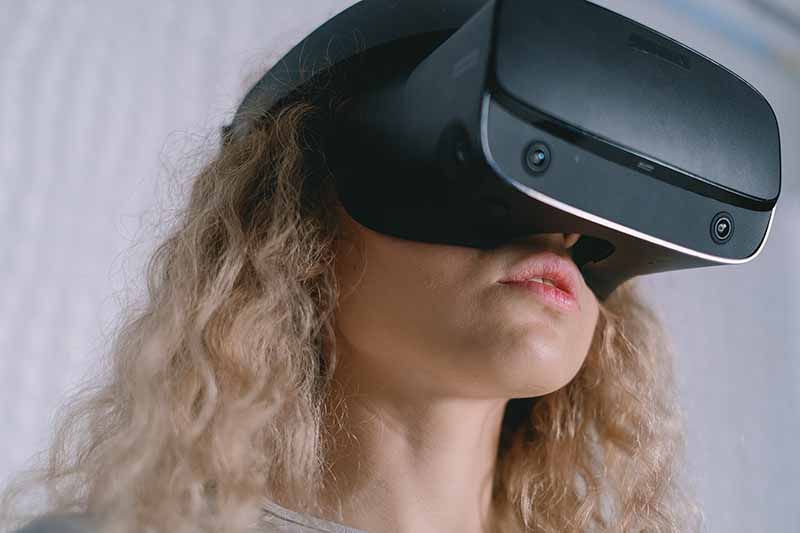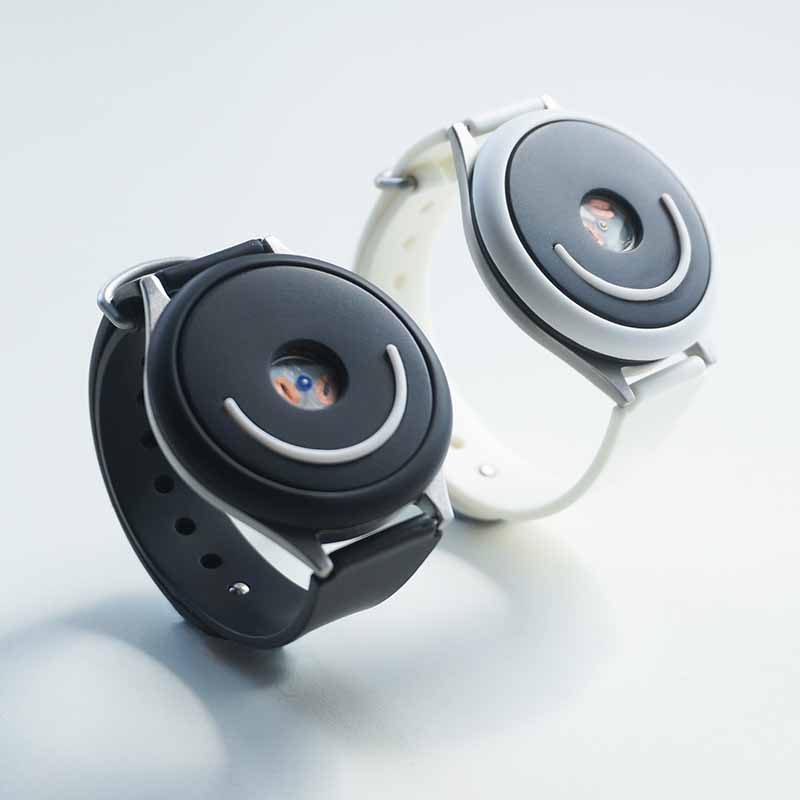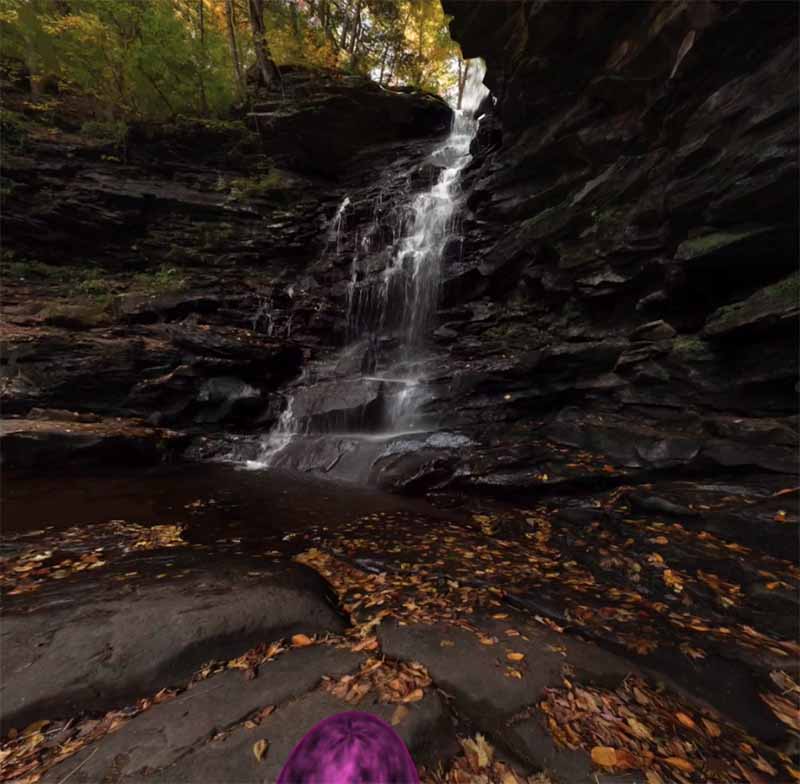
The spa is coming to the metaverse with technologies that will allow us to travel, interact, smell, and feel touch. Here’s what we can expect from spa in the metaverse and what we know about the technologies that will make it possible.
We’ve all heard about the Metaverse by now, which, in futurism and science fiction, is “a hypothetical iteration of the Internet as a single, universal and immersive virtual world that is facilitated by the use of virtual reality and augmented reality headsets. In colloquial use, a metaverse is a network of 3D virtual worlds focused on social connection.” (via Wikipedia)
Or, as Mathew Ball, a venture capitalist and angel investor who has written a series of essays about the potential and structures of the metaverse, told VICE, “The metaverse is a 3D version of the Internet and computing at large.”
How will this impact the worlds of hospitality, spa, and wellness? In various ways. The Global Wellness Institute tagged the metaverse as one of its global wellness trends for 2022 — and presumably well beyond. That said, it’s notoriously difficult to predict how technologies are going to be used in future. For decades, for example, the video call was expected to take over communications. And, while there has been an increase in face-to-face virtual interaction (particularly since the onset of the pandemic) the far more notable move over the last few years has been away from phone communication and towards written text communication. This is, in fact, the opposite of what science fiction appeared to be predicting in the 1960s. So, you never know.
That being said, we can make some educated guesses about the types of technologies that will impact wellness experiences and spa in the metaverse. Let’s look at a few of them.
Three technologies that will impact wellness experiences and spa in the metaverse
Virtual Reality/Augmented Reality
“Imagine visiting a spa destination, purchasing beauty products, or attending a myriad of educational classes” in the metaverse.

It’s hard to ignore the fact that VR, after years of hype, has yet to find a real market foothold outside of gaming, but the thinking is still that AR and VR will change the way we interact with the world and each other by forming a merged reality in the metaverse — probably just as soon as someone finds a way to mass facilitate the use of these interactive technologies without us having to wear a boxes on our faces.
To explain the difference between VR and AR: Augmented Reality is the enhancement of the real-world environment with projections of digital information onto existing surroundings, while Virtual Reality is a fully immersive process. (via The Medical Futurist) Mixed reality, meanwhile, combines the two, merging the real world and digital objects into an interactive reality.
The GWI noted opportunities for these technologies in the areas of:
Personal Care & beauty, in which consumers and brands are exploring “a digital world of makeup, hair color and inclusivity.”
Physical activity, in which applications allow players to use offline movement for online, interactive play. And which can be enhanced with AR projections into your environment to create an experience.
Wellness tourism, in which metaverse technology will transform how consumers make travel decisions with Virtual 3D tours in which digital avatars get an immersive feel for locations, rooms and amenities before making decisions.
Traditional & complementary medicine, in which AR and VR are used to give insight into the body and evoke specific feelings and reactions. Among other developments, digital solutions are replacing pharmaceuticals in the treatment of pain, stress, PTSD, and other mental health conditions.
VR and AR, may be offered as standalone treatments or services or as add-ons to existing services. Down the road, with the use of immersive technologies, a version of the spa/hospitality experience may be possible to replicate at home, including classes and retail experiences, and even interactions with therapists, right down to the feel of hands massaging your muscles.
The GWI namechecks the Lotte x Caliverse, in which Lotte Duty Free stores have created a metaverse experience that is accessed via headset and enabled users to visit real-world locations including stores, a movie theater, and an outdoor concert. Two- way communication features interactive technology that responds to touch, gaze and voice. Users can experience products such as bags, accessories, shirts, and pants in a virtual showroom and Lotte said that it plans to develop the technology to allow customers to make purchases in the virtual space.
“Imagine,” says the GWI report, “visiting a spa destination, purchasing beauty products, or attending a myriad of educational classes.”
More use cases for VR and the spa in the metaverse include:
Mental health: Doctors are prescribing VR games to treat conditions like attention deficit hyperactivity disorder (ADHD), depression and post-traumatic stress disorder (PTSD). In 2020, a VR game called EndeavorRX by Akili Interactive became the first ever prescription-strength video game approved by the FDA to treat ADHD in children. VR is also being used to treat social anxiety. “Studies from Oxford University found that patients who used automated VR therapy experienced a 38% decrease in anxiety and avoidant symptoms over a six-week period.”
Pain management: VR has been found to be an effective treatment for chronic pain. Therapeutic VR is being used for women in labor at Cedars-Sinai and burn victims at the University of Washington, pediatric patients at Children’s Hospital Los Angeles.
Virtual fitness: VR-based fitness is becoming commonplace with brands like Peloton. Meta has reportedly announced it is acquiring VR fitness subscription service Supernatural, a workout service for at-home training.

A study of patients recovering from stroke or spinal-cord injury reportedly found VR exercise has the potential to improve rehabilitative outcomes compared with traditional exercise. Home-based AR systems could transform how doctors manage chronic conditions, for example, allowing them to provide interactive recommendations for patients in their daily lives. (via Daniel Zahler on Linkedin)
Haptic Technology
Massage and other touch treatments will be available through haptic tech for those who want to visit the spa in the metaverse.

Haptics is the science of communicating, transmitting and understanding information through touch. According to the Oxford Dictionary & Lexico, haptics “relate to the sense of touch, in particular relating to the perception and manipulation of objects using the senses of touch and proprioception.” And haptic technology is “the use of technology that stimulates the sense of touch and motion, especially to reproduce in remote operation or computer simulation the sensations that would be felt by a user interacting directly with physical objects.”
Haptic technology creates an experience of touch with forces, vibrations, or motions. Haptic tech is what makes the vibrations on your phone, fitness tracker, or game controller. And haptic tech will play a role in the spa of the future and the metaverse.
The wellness applications for haptics are many. Simulated touch can be used to calm and reduce stress. Doppel, for example, is a wearable device that uses haptic technology to help the user feel calm and focused by imitating their heartbeat.
The Doppel wearable works by creating a silent vibration on the inside of your wrist which feels just like the ‘lub-dub’ of a heartbeat, explains the company website. “Slower rhythms are calming, and faster rhythms help you feel focused – like music.” Results showing Doppel’s calming effect have been published in the peer-reviewed journal Nature Scientific Reports.
In related news, Scientists from Carnegie Mellon University’s Future Interfaces Group recently announced that they had adapted a VR headset with ultrasonic transducers allowing for the user to feel sensations on their mouth. The researchers wanted to make the personal experience richer by introducing the mouth as a new haptic target and, after fingertips, the mouth is second in terms of tactile sensitivity, explains IFLScience.
The ultrasonic transducer focuses acoustic energy onto the mouth, simulating different sensations that can mimic the wind, brushing teeth, kissing or, in this particular case, spiders. In a simulation, users walk through a haunted forest and feel spider webs, spiders, and the gooey splash of an exploding spider on their lips. While this experience might not sound very relaxing or applicable to a spa atmosphere, it obviously doesn’t have to be spiders. It could be a gentle breeze or a relaxing touch. These technologies could also have applications in ASMR, which can help some people relax and reduce anxiety.
We’ve seen haptic gloves and haptic suits that facilitate creating the sensation of touch. And in 2018, a haptic touch massage device showed potential during tests for use by couples during long-distance communication as well as for parents-child relationships.
California tech start-up, Emerge, is also developing technology that it says will allow people to physically feel what they experience in virtual reality (VR). Emerge is building a family of products that makes it possible for users to physically feel tactile experiences with bare hands in a virtual space without the need for gloves, controllers, or any wearables.
In early 2022, the company launched the Emerge Home system: said to be the first product to enable immersive “bare-hands” tactile experiences in the Metaverse. The system consists of three components: the Emerge Wave-1 device, the Emerge Home social virtual experience, and the Emerge Home mobile app. The goal is “to take people beyond the screen and allow them to connect emotionally in a natural way, from anywhere.”
The Emerge Wave-1 is a tabletop device that allows you to use your bare hands as controllers. It emits sculpted ultrasonic waves that allow users to feel and interact via touch in the virtual world.
“Emerge represents what we hope could be a next paradigm shift in human interaction,” said Sly Lee, Co-CEO and Co-founder of Emerge. “Emerge Home’s goal is to take people beyond the screen and allow them to connect emotionally in a natural way, no matter the distance between them.”
We expect that massage and other touch treatments will be available through haptic tech for those who want to visit the spa in the metaverse. More possibilities abound.
Digital Scent Technology
“In the near future, multi-sensory digital treatments will be a major part of the spa experience either on their own, or in combination with other elements especially in urban areas.”

Odors affect people’s mood, stress levels, work performance, perceptions, and purchase decisions. According to the Scent Marketing Institute:
- Talcum powder makes us feel safe, secure and nostalgic*
- Peppermint and citrus make us more alert
- Lavender, vanilla, and chamomile help us relax
- Barbecue smoke will make us perceive a room as smaller:
- Apple and cucumber will make us perceive a room as bigger
- Leather and cedar will induce us to buy expensive furniture
*Though the institute notes that individual memory plays a role in how we perceive scent.
The possibilities for scent technology in the metaverse are vast and people are working to create those aromatic experiences in a range of capacities. MIT Sloan reports that innovative start-ups are pioneering new approaches to digital olfaction with technology that draws from many scientific disciplines, including organic chemistry, silicon engineering, machine learning, data science, photonics, and software engineering.
Aryballe, for example, is a digital olfaction start-up based in France that “uses tiny proteins called peptides grafted onto silicon wafers that react to the gas molecules associated with different odors. The various digital signatures are then decoded using machine learning and expressed in the terms that humans use to describe smells: woody, floral, fragrant, smoky, and so on.”
Confused? That’s OK. So are we. It’s hard to understand all of the ways in which scent technology is being developed. A company that’s doing something somewhat comprehensible is Vermont-based OVR Technology (olfactory virtual reality technology). OVR uses patented microtechnology to create precise “nano bursts” of scent that are released through a reusable scent cartridge. The company’s flagship product is the ION, a cartridge that snaps onto a VR headset.
If it sounds a bit like the “smell-o-vision” of the early 20th Century, that’s because it is – but it’s also not. Until recently, digitizing scent has been notoriously difficult.
OVR says: “Understanding scent and then engineering technology to recreate it has historically failed but new research and technology from OVR make it not only possible, but a reality,” and that its scent technology for the Metaverse will change the way we learn, heal, play, and connect.
OVR’s cartridge comes preloaded with nine chemical compounds that combine to make hundreds of scents. Fast Company explains that creating smells is a complex process. For instance, “While ‘strawberry’ or ‘chocolate’ scents are straightforward, to create ‘beach’ requires a combination of sand, sea breeze, and SPF.”
OVR’s CEO, Aaron Wisniewski, explained to Spa Executive in an email that “Scent is unique from all of our other senses, it’s the only sense that is directly connected to the limbic system which is the oldest part of our brains and it’s where our memories and emotions are formed.
“That means that, even though we may not notice it, with every breath we take, scent has a profound influence on how we feel, what we think, how we experience the world around us, and what motivates us. It influences what we eat, what we buy, and even who we love.
“Without smell, it’s like living in black and white or behind a sheet of glass. And, as we continue to spend more and more time in front of screens, phones, tablets, and VR, we are deprived of the rich, human experience that smell affords us.”
With OVR’s spatial, wearable scent technology, he says, “all digital experiences can be as rich, meaningful, immersive, and effective as our real ones. That means new ways to approach health and wellness, new ways to learn, new ways to connect with others, and a whole new way to experience immersive entertainment.”
OVR is not a medical company, its products have not been evaluated by the FDA, and they make no claims about the prevention, diagnosis, or cure of any disease. Evidence, however, suggests that combining scent with immersive technology can have a profound effect on mood and mental wellness and that there is potential for use in the health and wellness industry.
“In a recently published study, we saw a significant decrease in feelings of pain, stress, and anxiety after only a short OVR session,” Wisniewski said. “In other recent research, we also saw increased happiness, lower blood pressure, and even increased gamma activity in the brain which is similar to what is observed in monks who are in deep meditation or artists and athletes in ‘flow states.’”
INHALE, an OVR mindfulness meditation program designed with neuroscientists and meditation experts, is being used in rehab and addiction centers as a tool to help ease the discomfort that patients feel during the detox and treatment process, which makes them more likely to complete the treatment.
Wisniewski also says, “We are already seeing this trend blossom in a few innovative spas and clinics, and I believe that in the near future, multi-sensory digital treatments will be a major part of the spa experience either on their own, or in combination with other elements especially in urban areas. For example, why wouldn’t you want to do a multi-sensory mindfulness meditation on top of Machu Picchu while you get a pedicure, a massage, or even IV treatment? We strive to help spas embrace innovations like this for it to eventually be a cornerstone of the next generation of spa experiences.”



